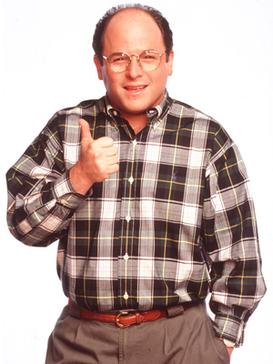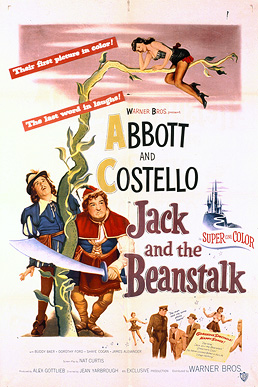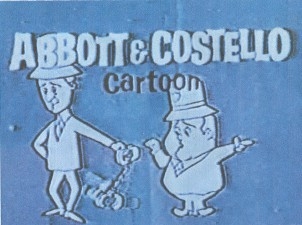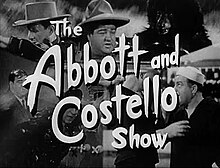
Seinfeld is an American television sitcom created by Larry David and Jerry Seinfeld that originally aired on NBC from July 5, 1989 to May 14, 1998, with a total of nine seasons consisting of 180 episodes. The show's ensemble cast stars Seinfeld as a fictionalized version of himself and focuses on his personal life with three of his friends: best friend George Costanza, former girlfriend Elaine Benes, and neighbor from across the hall, Cosmo Kramer.

The Mary Tyler Moore Show is an American television sitcom created by James L. Brooks and Allan Burns and starring actress Mary Tyler Moore. The show originally aired on CBS from September 19, 1970, to March 19, 1977. Moore portrayed Mary Richards, an unmarried, independent woman focused on her career as associate producer of a news show at the fictional local station WJM in Minneapolis. Ed Asner co-starred as Mary's boss Lou Grant, alongside Gavin MacLeod, Ted Knight, Georgia Engel, Betty White, Valerie Harper as friend and neighbor Rhoda Morgenstern, and Cloris Leachman as friend and landlady Phyllis Lindstrom.

William Alexander "Bud" Abbott was an American comedian, actor and producer. He was best known as the straight man half of the comedy duo Abbott and Costello.

Louis Francis Cristillo, better known as Lou Costello, was an American comedian, actor and producer. He was best known for his double act with Bud Abbott and their routine "Who's on First?".

Abbott and Costello were an American comedy duo composed of comedians Bud Abbott and Lou Costello, whose work in radio, film, and television made them the most popular comedy team of the 1940s and 1950s, and the highest-paid entertainers in the world during the Second World War. Their patter routine "Who's on First?" is considered one of the greatest comedy routines of all time, a version of which appears in their 1945 film The Naughty Nineties.

"Who's on First?" is a comedy routine made famous by American comedy duo Abbott and Costello. The premise of the sketch is that Abbott is identifying the players on a baseball team for Costello. However, the players' names can simultaneously serve as the basis for questions and responses, leading to reciprocal misunderstanding and growing frustration between the performers. Although it is commonly known as "Who's on First?", Abbott and Costello frequently referred to it simply as "Baseball".

The Larry Sanders Show is an American television sitcom set in the office and studio of a fictional late-night talk show. Created by Garry Shandling and Dennis Klein, the show ran for six seasons and 90 episodes on the HBO cable television network from August 15, 1992, to May 31, 1998.

George Louis Costanza is a fictional character in the American television sitcom Seinfeld (1989–1998), played by Jason Alexander. He is a short, stocky, balding man who struggles with numerous insecurities, often dooming his romantic relationships through his own fear of being dumped. He is also remarkably lazy; during periods of unemployment he actively avoids getting a job, and while employed he often finds ingenious ways to conceal idleness from his bosses. He is friends with Jerry Seinfeld, Cosmo Kramer, and Elaine Benes. George and Jerry were junior high school friends and remained friends afterward. George appears in every episode except "The Pen".
Larry Charles is an American comedian, screenwriter, director, actor, and producer. He was a staff writer for the sitcom Seinfeld for its first five seasons. He has also directed the documentary film Religulous and the mockumentary comedy films Borat, Brüno, and The Dictator. His Netflix documentary series Larry Charles' Dangerous World of Comedy premiered in 2019.
"The Seinfeld Chronicles" is the pilot episode of the American sitcom Seinfeld, which first aired on NBC on July 5, 1989.

Jack and the Beanstalk is a 1952 American family comedy film starring the comedy team of Abbott and Costello and featuring Buddy Baer, Dorothy Ford and Barbara Brown. It is a comic retelling of the "Jack and the Beanstalk" fairy tale, produced by Abbott and Costello and distributed by Warner Bros.
"The Jacket" is the third episode of the second season of the NBC sitcom Seinfeld and the show's eighth episode overall. In the episode, Jerry Seinfeld buys an expensive suede jacket and has dinner with the father of his ex-girlfriend Elaine Benes. Elaine's father Alton, a war veteran and writer, makes Jerry and his friend George Costanza very uncomfortable. Elaine is delayed and Jerry and George are stuck with Alton waiting for her at the hotel.
"The Pony Remark" is the second episode of the second season of the NBC sitcom Seinfeld, and the seventh episode overall. The episode was written by series co-creators Jerry Seinfeld and Larry David, based on a remark David once made.
"The Chinese Restaurant" is the 11th episode of the second season of the American sitcom Seinfeld, and the 16th episode overall. Originally aired on NBC on May 23, 1991, the episode revolves entirely around Jerry and his friends Elaine Benes and George Costanza waiting for a table at a Chinese restaurant, on their way to see a special one-night showing of Plan 9 from Outer Space. George tries to use the phone but it is constantly occupied, Elaine struggles to control her hunger, and Jerry recognizes a woman but is unsure where he has seen her before.

The Colgate Comedy Hour is an American comedy-musical variety series that aired live on the NBC network from 1950 to 1955. The show featured many notable comedians and entertainers of the era as guest stars. Many of the scripts of the series are archived at the UCLA Library in their Special Collections.
Sidney Fields, born Sidney Hirsch Feldman, was an American comedic actor and writer best known for his featured role on The Abbott and Costello Show in the 1940s (radio) and early 1950s (television). He was sometimes credited as "Sid Fields" or "Sidney Field".
Norman Abbott was an American vaudevillian, actor, producer and television director.

The Abbott and Costello Cartoon Show is an American half-hour animated series of the famous comedy duo that aired in syndication from September 9, 1967, to June 1, 1968. Each of the 39 individual episodes consisted of four five-minute cartoons. The cartoons were created jointly by Hanna-Barbera, RKO General, and Jomar Productions between 1965 and 1967. The series was syndicated by Gold Key Entertainment and King World Productions, with the rights now owned by Warner Bros. Television Distribution.
John Grant was a comedy writer best known for his association with Bud Abbott and Lou Costello. Costello called him their "chief idea man". Grant contributed to Abbott and Costello's radio, film and live television scripts, as well as the films of Dean Martin and Jerry Lewis and Ma and Pa Kettle.

Situation comedies, or sitcoms, have long been a popular genre of comedy in the US, initially on radio in the 1920s, and then on television beginning in the 1940s. A sitcom is defined as a television series featuring a recurring cast of characters in various successive comedic situations.












